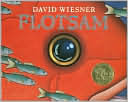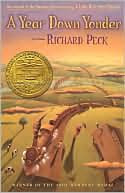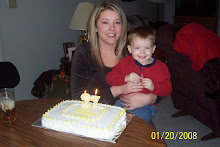






Sources:
Uchida, Y. (1978). Journey home. New York: Antheneum.
www.barnesandnoble.com Image retrieved on 4-1-08.
www.clarion.edu/edu-humm/libsci/buchanancoursesyl/uchida2.htm Information retrieved on 4-1-08.
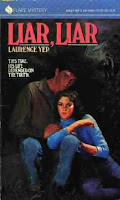
Laurence Yep was born in San Francisco, CA in 1948. As an author, he has won numerous awards, including a Newbery Honor Award. He is one of the most respected Asian-American writers of his time.
He fell in love with writing almost by accident. In high school, his English teacher told his class that to get an "A" they would have to get published in a national magazine. Although the teacher later withdrew that threat, Yep begin writing and sold his first story for a penny a page at the age of 18.
The book I read by Yep was Liar, Liar. This book is fairly old, and the image on this page of the book is not the image on the book I actually read! But the story remains the same. Sean Pierce, a 16 year old, tries to prove that his friend's car was tampered with before he had a fatal accident. When it comes out that Sean has lied before, people pass off his notions as "crazy." For once, he is telling the truth, but it may be too late by the time anybody believes him, because now the killer is after him. This book is a great mystery, and it shows how the boy who cried "wolf" too many times finds it hard to get people to believe in him, especially when the killer is a respected business man. I thought the book was well written, if a little juvenile. The main character took on some responsibilities that most 16-year old boys would not take on.
After doing some research, I wish I had read a different book of his, but this was all my library currently had in. Maybe when I have some free time (ha! ha!) I can read one of his more recent works!
Other titles by Laurence Yep include:
Sources:
Yep, L. (1983). Liar, liar. New York: William Morrow and Company.
www.eduplace.com./kids/hmr/mtai/yep.html Information retrieved on 3-13-08.
www.fantasticfiction.co.uk/y/laurence-yep/ Images retrieved on 3-31-08.

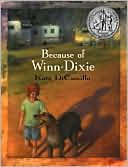

 In for Winter, Out for Spring is a book written by Arnold Adoff and illustrated by Jerry Pinkney.The story tells a tale of how a family goes through the seasons and the different things they do together at each one. It is a delightful story of family dynamics, and the coffee-house poetry style the author uses is a fascinating way to tell it, one which I have never seen before. The verse gives the story a beautiful flow and helps the reader "feel" the changing of seasons.
In for Winter, Out for Spring is a book written by Arnold Adoff and illustrated by Jerry Pinkney.The story tells a tale of how a family goes through the seasons and the different things they do together at each one. It is a delightful story of family dynamics, and the coffee-house poetry style the author uses is a fascinating way to tell it, one which I have never seen before. The verse gives the story a beautiful flow and helps the reader "feel" the changing of seasons.Pinkney has received the Caldecott Honor several times, as well as the Coretta Scott King Award for Illustrators.
Sources:
www.barnesandnoble.com Image retrieved 3-14-08
www.eduplace.com/kids/hmr/mtai/jpinkney.html Retrieved on 3-13-08
Adoff, A. (1991). In for winter, out for spring. San Diego: Harcourt Brace Jovanovich, Publishers.

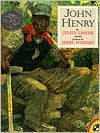
Sources:
http://www.barnesandnoble.com/ Retrieved 3-13-08
www.eduplace.com/kids/hmr/mtai/lester.html Retrieved on 3-13-08
Lester, J. (1994). John henry. New York: Dial Books for Young Children.
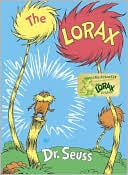

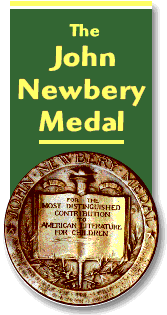

 I recently read The Hello, Goodbye Window by Norton Juster. The book is illustrated by Chris Raschka. I must say, I was not in love with this book. The story was charming, but very simple. It is about a girl that loves to spend time with her grandparents, and they all love this window in her grandparents' kitchen. They can see each other in it when the little girl comes over, and then when she leaves. I do not know what I was expecting, but this wasn't it.
I recently read The Hello, Goodbye Window by Norton Juster. The book is illustrated by Chris Raschka. I must say, I was not in love with this book. The story was charming, but very simple. It is about a girl that loves to spend time with her grandparents, and they all love this window in her grandparents' kitchen. They can see each other in it when the little girl comes over, and then when she leaves. I do not know what I was expecting, but this wasn't it.